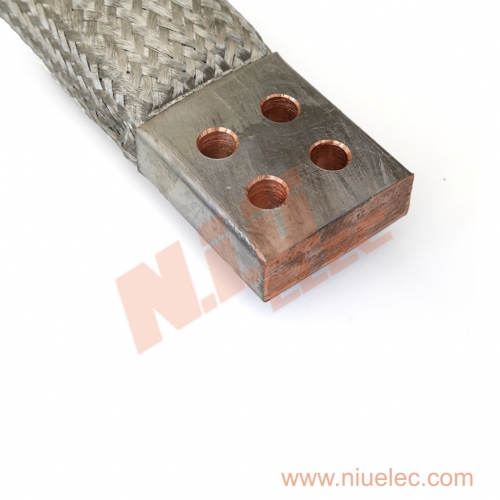Durability Factors That Define High Current Braid Flexible Wire Performance
Power transmission systems rely heavily on the connections between bus bars and transformers as critical lifelines. A failure at these points can lead to significant downtime and costly repairs. This reality underscores the importance of using components designed for extreme conditions. High current braid flexible wires, often called transformer braids, are engineered specifically for this purpose, ensuring a stable and reliable flow of electricity. Selecting a dependable braid flexible wires supplier is the first step in guaranteeing the integrity of these essential electrical installations.
Table of contents:
Resistance to corrosion and oxidation in braid copper wire for power installations
Role of flexible wire design in managing mechanical stress in transmission systems
Quality controls implemented by N.I.U Electric ensuring longevity and reliability
Resistance to corrosion and oxidation in braid copper wire for power installations
The operational environment of power installations is often harsh, with components constantly exposed to humidity, industrial pollutants, and fluctuating temperatures. These factors create a perfect storm for corrosion and oxidation, particularly on copper surfaces. When braid copper wire succumbs to these environmental attacks, its electrical resistance increases. This degradation not only diminishes efficiency but also generates excess heat, posing a significant fire risk and leading to premature failure of critical connections. A proficient Braid copper wire manufacturer understands this vulnerability and engineers products to counteract it. For instance, the transformer braids from N.I.U Electric are manufactured with materials and processes that provide notable resistance to both corrosion and oxidation. This ensures that the high conductivity of the wire is maintained over its entire service life, even in demanding industrial and commercial electrical installations. When facility managers source components, they must consider this long-term resilience. Choosing a specialized copper wire supplier that prioritizes these protective features is essential for building a power transmission system that is not just efficient, but also safe and durable, minimizing the need for frequent maintenance and replacement.

Role of flexible wire design in managing mechanical stress in transmission systems
Electrical connections in power transmission systems endure constant mechanical stress. The powerful magnetic fields generated by high currents cause vibrations, and daily thermal cycles lead to the expansion and contraction of components. Rigid connectors struggle to accommodate this movement, leading to metal fatigue, loosened connections, and eventual mechanical failure. This is precisely where the design of flexible wires becomes paramount. The intricate woven structure of a transformer braid provides exceptional flexibility, allowing it to absorb vibrations and tolerate misalignment between a bus bar and a transformer terminal. This inherent pliability ensures a secure and continuous electrical path, even under dynamic loads. A knowledgeable braid flexible wires supplier recognizes that this flexibility also simplifies the installation process, as the wires can be easily routed in tight spaces without putting strain on the connection points. By choosing a product engineered for high flexibility, system designers and maintenance crews can mitigate the risks associated with mechanical stress, significantly extending the lifespan of the connection and improving the overall reliability of the power system. This focus on intelligent design is what separates a standard component from a long-term solution.
Quality controls implemented by N.I.U Electric ensuring longevity and reliability
The performance of a high current braid flexible wire is only as good as the manufacturing process behind it. For project managers overseeing large-scale industrial or commercial electrical installations, consistency is key. A single faulty component can compromise an entire system, making the choice of a Braid copper wire manufacturer a critical decision. N.I.U Electric, with over two decades of industry leadership, addresses this need through rigorous quality control protocols. Every stage of production, from raw material selection to the final weaving and tinning of the transformer braids, is subject to strict inspection and testing. This ensures that every wire meets precise specifications for conductivity, flexibility, and durability. By leveraging advanced technology and a deep understanding of electrical engineering principles, the company guarantees that its products perform reliably in the most demanding environments. This commitment to quality is what distinguishes a premier braid flexible wires supplier. Customers can trust that each component, whether it's a transformer braid or one of the many other electrical products offered, has been manufactured to the highest standards, ensuring system longevity and operational peace of mind. A reliable braid flexible wires supplier builds trust through proven performance.
The durability of high current connections hinges on a combination of material science, intelligent design, and stringent manufacturing. Features like corrosion resistance and flexibility are not just specifications on a data sheet; they are essential for ensuring a safe and continuous power supply. As a veteran braid flexible wires supplier, N.I.U Electric understands these demands. The company's commitment to quality, ease of installation, and comprehensive support, including custom OEM and ODM services, provides a foundation of reliability for any electrical project.